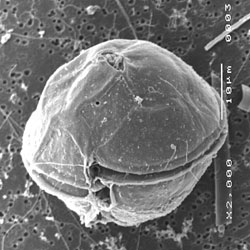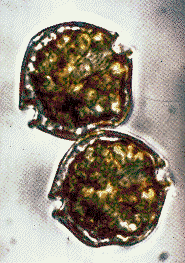Alexandrium tamarense: Difference between revisions
imported>Ciro Monaco Jr. |
imported>Ciro Monaco Jr. |
||
| Line 12: | Line 12: | ||
===Species=== | ===Species=== | ||
''Alexandrium tamarense'' | |||
==Description and significance== | ==Description and significance== | ||
Revision as of 06:59, 31 March 2008
Articles that lack this notice, including many Eduzendium ones, welcome your collaboration! |
Classification
Higher order taxa
Domain; Phylum; Class; Order; family [Others may be used. Use Tree of Life link to find]
Species
Alexandrium tamarense
Description and significance
Describe the appearance, habitat, etc. of the organism, and why it is important enough to have its genome sequenced. Describe how and where it was isolated. Include a picture or two (with sources) if you can find them.
Genome structure
Describe the size and content of the genome. How many chromosomes? Circular or linear? Other interesting features? What is known about its sequence? Does it have any plasmids? Are they important to the organism's lifestyle?
Cell structure and metabolism
Describe any interesting features and/or cell structures; how it gains energy; what important molecules it produces.
Ecology
Describe any interactions with other organisms (included eukaryotes), contributions to the environment, effect on environment, etc.
Pathology
How does this organism cause disease? Human, animal, plant hosts? Virulence factors, as well as patient symptoms.
Application to Biotechnology
Does this organism produce any useful compounds or enzymes? What are they and how are they used?
Current Research
Enter summaries of the most recent research here--at least three required
References
[http://woodshole.er.usgs.gov/operations/modeling/wgulf/wgulf.html Don Anderson WHOI, [email protected] Brad Butman USGS, [email protected] Peter Franks SIO, [email protected] Rocky Geyer WHOI, [email protected] Ted Loder UNH, [email protected] Rich Signell USGS, [email protected] Bruce Keafer WHOI, [email protected] Derek Fong WHOI, [email protected] "Toxic "Red Tide" Populations in the Western Gulf of Maine: Sources, Transport, and Nutrient Environment]

